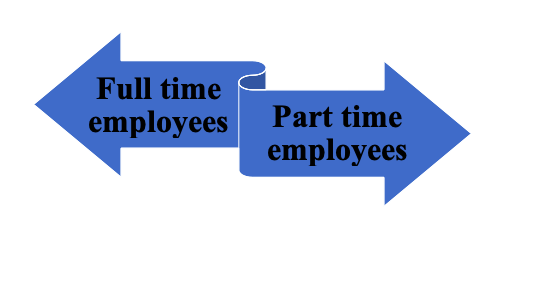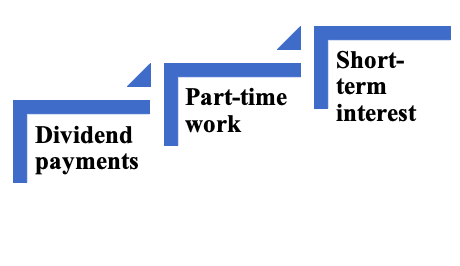Many people know the term pro-rata before applying for a job. But many of us aren’t aware of the meaning of this term. Still, it is one of the most used terms that you can see in the employer salary description. Moreover, we all know that a salaried employee receives payment on an annual basis rather than an hourly rate. In simple words, we can say salaried employees are usually full-time workers. Some employees are exempt from the provisions of the fair labor standard act, but some aren’t. If you are already a pro, then there is still a need to learn about the pro-rata salary term.
Table of Contents
What is a pro-rata salary term?
Pro-rata salary is an easy indication that helps to figure out the short-term and partial gains. It is a Latin term that means “Per the rate” or “Proportionally.” In North America, the term is known as “Prorated.” Apart from this, it helps calculate payments, especially when you are a full-time worker. So, it’s vital to learn this concept, and here we are stating an exact definition:
“Pro-rata is an amount employees would receive if they worked full time.”
For instance, the average income of an employee should be $20,000. But if the employee is only working for 30 hours a week, then the actual salary would be $15000. So, the pro-rata is like a total proportion of a full-time salary. The labor cost can only account for up to 70% of the total cost. So, in this situation, it’s vital to understand the binding terms which would help save your bank account.
Importance of getting a pro-rata salary:
Many reasons make it crucial to calculate the pro-rata salary. For instance, if you offer a paid time off, don’t pro-rata their salary in this situation. Apart from this, the following reasons make it crucial to calculate the pro-rata check. It would help if you calculated your pro-rated salary under these conditions:
- If you don’t offer paid time off or employee, take a leave
- When your employees take days off, even if you provide a PTO policy
- It would help if you had an implementation of the leave policy
- Moreover, when the employee starts in the middle of the work week or month
- When the employee is terminated in the middle of the work week or month
But if you forget the pro-rata salary, then it could be costly. However, it’s always better if you learn how to pro-rata salary.
How to calculate the pro-rata salary? A complete guide:
An employee can receive payment in different methods. For instance, the payment method could be weekly, bi-weekly, semi-monthly, or monthly. However, you must follow these steps to calculate a pro-rata salary.
| Step # 01: Find the employee’s hourly wage |
| Step # 02: Multiply the hourly wage by the number of hours they missed |
| Step # 03: Subtract the amount from the employee’s regular wages |
It is comparatively easy to calculate the pro-rata salary. If you follow this method, then you can easily calculate hourly or daily earnings. It also helps determine employees’ wages if they take full or half-day off.
Formula to calculate pro-rate salary:
The process is easy if you want to follow a primary calculation method. However, the basic formula is as follows:
“Annual salary / full-time hours * actual working hours”
There are many other formulas, but these aren’t 100% accurate. However, the best way is to calculate pro-rata pay by hours rather than days. Simply put, it’s easy to think of it as a wage instead of a salary. But before diving into the pro-rata salary calculation, don’t forget to understand who qualifies because there are two types of employees:
Full-time employees are salaried and receive a certain amount per annum. But the part-time employees or independent contractors receive a salary according to their work hours. So, in simple words, we call it a pro-rata salary, but there isn’t any standard formula. Here are a few steps in the procedure:
- Divide the annual employee’s salary by 52 weeks in the year
- Divide the weekly salary by the number of days or hours employees worked
- Multiply employee’s hourly or daily rate by the number of total hours they missed
- Subtract the number 3 from step 3 from the employee’s usual pay period amount
If you take the help of the pro-rata, then it means everyone will get a fair share. You can apply the pro-rating in many areas, from billing to paying dividends or allocating business partnership income.
The reason for the pro-rate percentage on the payslip:
If you see a portion of the pro-rata percentage on any best paystub generator, then it would be great if you understood the theory. The pro-rata percentage is simply for employees who don’t receive pay slips for a month. However, if you are interested in calculating pro-rata, then here are a few standard formulas:
| Annual salary / 52 = weekly salary |
| Weekly salary / # of hours normally worked = hourly wages |
| Employee’s hourly wages * number of total hours missed = reduction amount |
| Usual pay period amount – reduction amount = pro-rata salary |
Once you figure out the pro-rated salary, don’t forget to add it to the pay slip. You can take the help of the best paystub generator to do this task. If pro-rata is calculated correctly, employees’ tax liability decreases because gross income decreases.
Applications of pro-rata salary:
Pro-rata calculations have different valuable applications that help in the business world. So, here are the typical applications of the pro-rata salary that are helpful in the business world.
Pro-rata means the division of something that makes up a whole. But all parts aren’t equal; that’s why you should give value to everything in proportion. So, it’s a valuable method to determine the value of something. Hopefully, we have covered everything, so pro-rata is helpful for small business owners because it’s an excellent way to cut costs. Besides, it helps in saving money and makes the journey less trouble.



